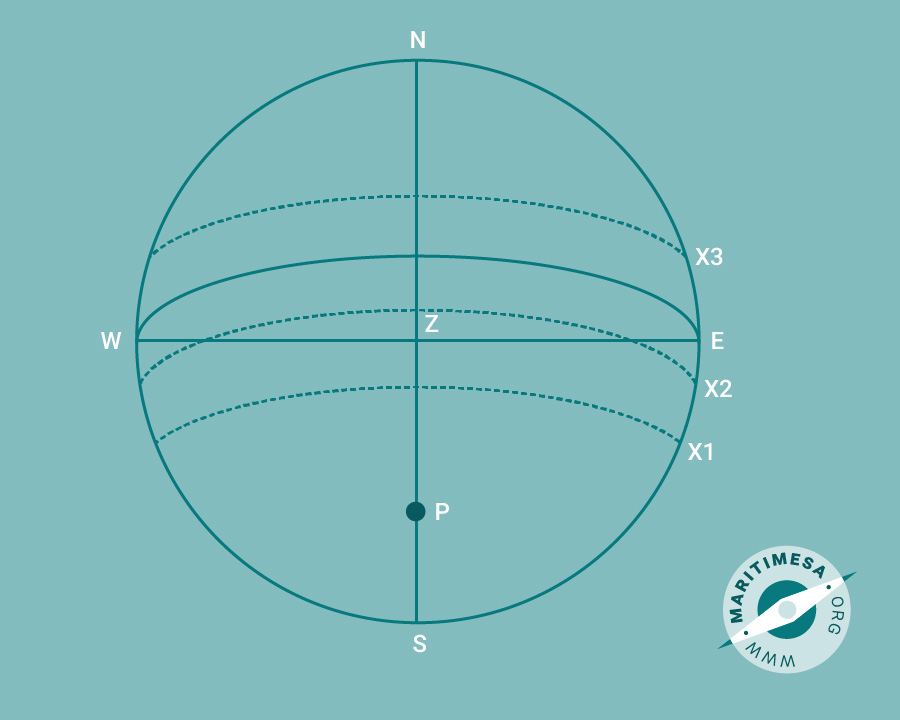When the sun and the observer’s zenith are on the same celestial meridian, then there is a simple relationship between declination, zenith distance and the latitude. All three are arcs of the same great circle and their values give the distance of each point from the celestial equator (equinoctial) and the distance of one from the other, the units of distance being one minute of arc of the great circle or one nautical mile.
In the drawing below three different declinations of the sun are plotted. They are represented by X1, X2 and X3. X1 has the same name as the latitude of the observer but is greater in magnitude than the latitude. X2 also has the same name as the latitude but is less in magnitude than the latitude. X3 has the opposite name to that of the latitude.

If the declination has the same name as the latitude but is greater in magnitude, then the latitude is equal to the declination minus the zenith distance.
If the declination has the same name as the latitude but is less in magnitude, then the latitude is equal to the declination plus the zenith distance.
If the declination has the opposite name to the latitude, then the latitude is equal to zenith distance minus the declination.

